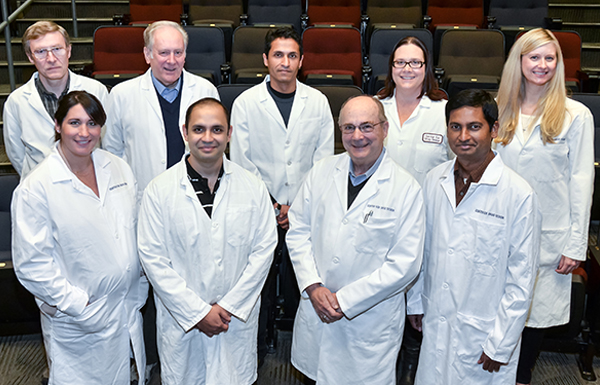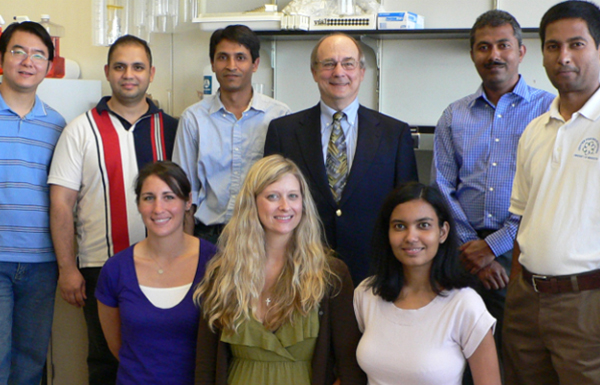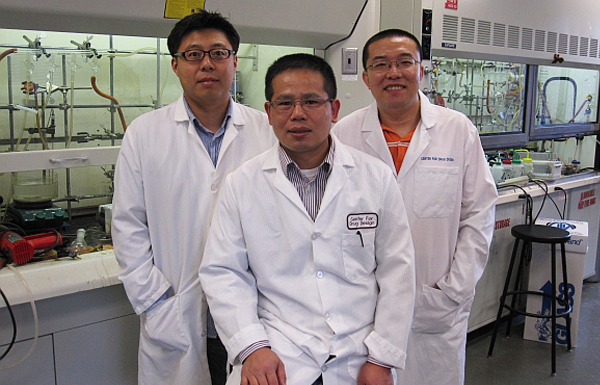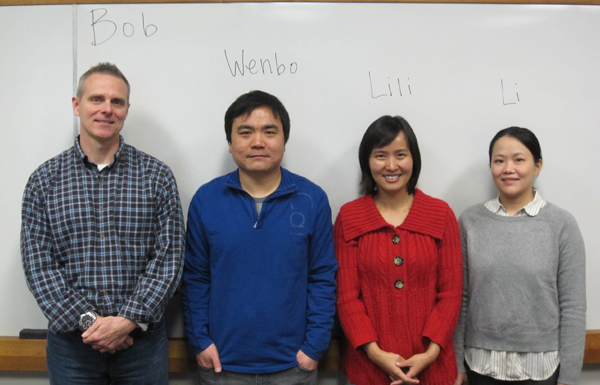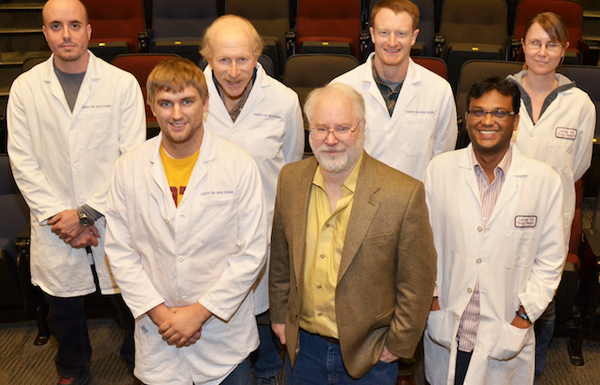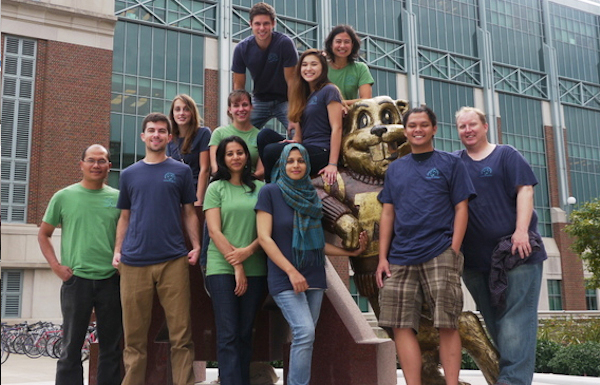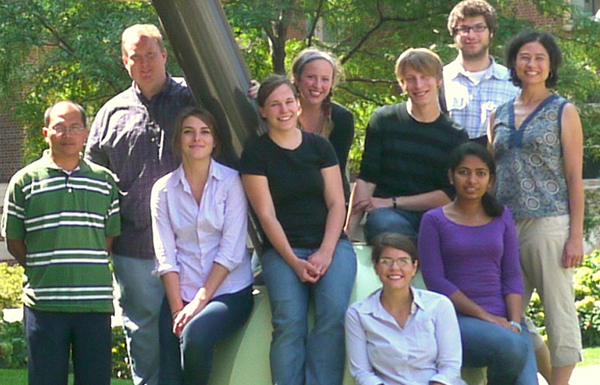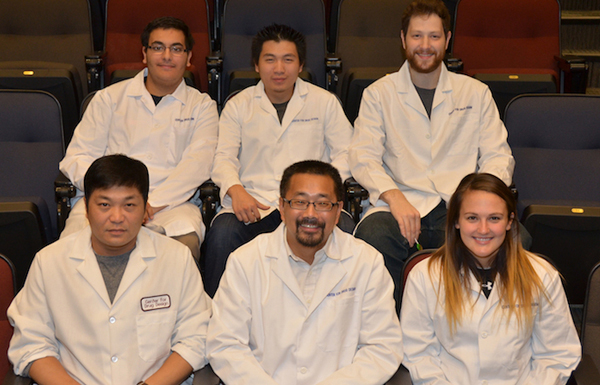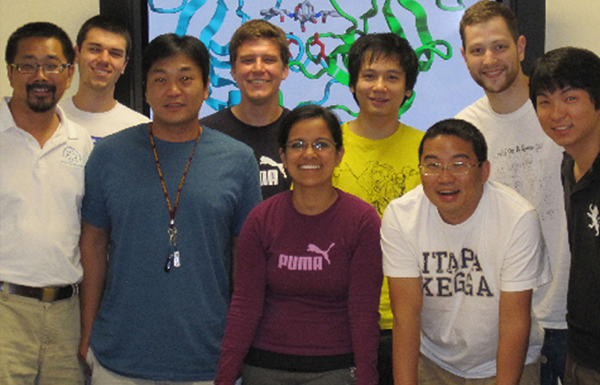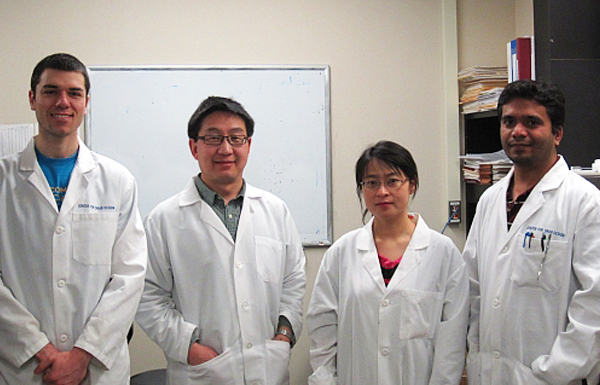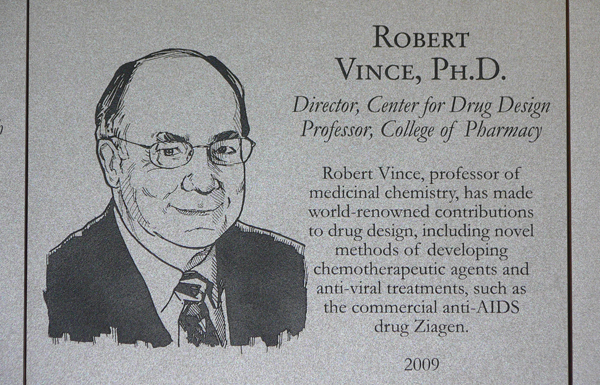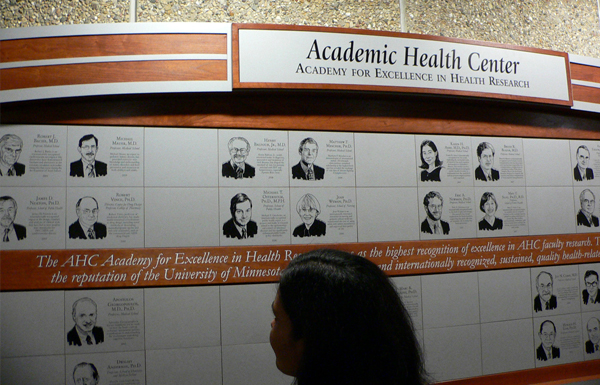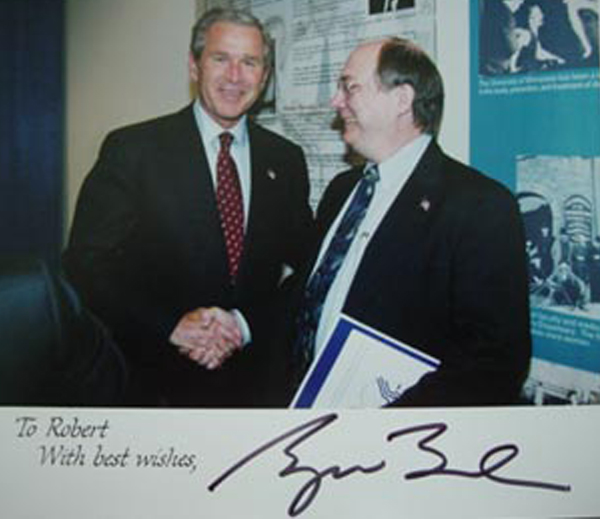Images from various research groups actively involved in research at CDD
Center for Drug Design Group Pictures
Vince Group
Chen Group
Geraghty Group
Patterson Group
Salomon Group
Sham Group
Wang Group
Please click on the video you are interested in, or visit us our youtube channel. Click on the icon provided on right hand bottom corner of the page, for subscribing to our youtube channel.
Acyclovir to Ziagen - A Journey: Robert Vince, PhD
Acyclovir to Ziagen: A Journey
by Robert Vince, PhD
Center for Drug Design
Academic Health Center
University of Minnesota
Minneapolis, MN 55455
ABSTRACT
This presentation follows the author’s experiences through a journey of nucleoside drug design from the original acyclonucleoside to the present carbocyclic nucleosides including the AIDS drug, Ziagen.
In 1971, the first acyclonucleoside, acycloadenosine, was reported from our lab in which the sugar of a nucleoside was replaced with a 2-hydroxyethoxymethyl moiety.1 This nucleoside emerged from the design of several purine substituted analogs in which hydroxyalkyl groups were placed on the the 9-N position in place of the ribose sugar. These abbreviated sugar moieties were used to assess the enzyme binding contributions from the various carbohydrate hydroxyls of the original nucleoside. One enzyme system used extensively in our studies was adenosine deaminase and its corresponding substrate, adenosine. It soon became apparent that many of the hydroxyalkylnucleosides were excellent enzyme inhibitors, but we were bothered by the fact that they did not act as efficient substrates. All of our modified nucleosides at that point contained hydroxy-substituted alkyl groups (e.g., 4-hydroxybutyl, 1,3-dihydroxypropyl, etc.), which we considered as mimics of the lower non-ether half of the ribose sugar. We wondered if we could convert this series into substrates by mimicking the top half of the sugar. Indeed, when we prepared and tested 9-(2-hydroxyethoxymethyl)adenine (acycloadenosine) it was a substrate for adenosine deaminase, whereas the corresponding 9-(4-hydroxybutyl)adenine, without the ether oxygen, was an inhibitor. This observation led us to believe that these compounds could act as substrates for other enzymes, such as kinases, and act as antitumor or antiviral agents. Our acycloadenosine was subsequently submitted for testing at Burroughs Wellcome Company by my PhD advisor, Howard J. Schaeffer, and was found to have significant anti-herpes activity. The adenine was then exchanged with guanine and the subsequent acycloguanosine was developed into the anti-herpes drug, Acyclovir.
Our experience with non-glycosidic nucleosides subsequently led to the successful use of this approach with the anti-tumor, antitrypanosomal antibiotic, puromycin. Puromycin has a 3’-aminoribose moiety that is phosphorylated to the nucleotide stage in vivo and causes nephrotoxic syndrome as a severe side effect. The use of carbocyclic sugars to replace the ribose moiety resulted in analogs which retained the desired protein synthesis inhibition, but had no nephrotoxicity.2 It later became evident that a key intermediate epoxide in the preparation of the carbocyclic puromycin sugar could also serve as a precursor to a new candidate anti-herpes agent, carbocyclic arabinosyladenine (C-AraA). During the mid-1970’s, the commercial drug, Vidarabine (Ara-A) was sold by Park Davis Pharmaceutical Co. This drug was very active against herpes I and II, but was limited to treatment of eye infections because of its rapid conversion to the inactive Ara-inosine. In collaboration with Dr. William M. Shannon at Southern Research Institute, we found that our carbocyclic Ara-A analog, called cyclaradine, was not converted to the inactive inosine form and was more active than Ara-A and also Acyclovir when tested against genital herpes in vivo.3 Reasons for non-development of this potential drug will be discussed.
In 1975, our group entertained the possibility of making DNA terminators using another key intermediate in our puromyin and Ara-A analog synthesis, i.e., our carbocyclic unsaturated aminosugar that was derived from our starting lactam. We proposed that the resulting didehydrodideoxy carobocyclic nucleosides may act on DNA polymerase and provide anticancer or antiviral agents. Because we needed to prepare the corresponding monophosphates and triphosphates for testing on isolated enzymes and lacked the funding for such a project, we elected to continue concentrating on our funded nucleoside projects which were producing active compounds.
Later, in 1985, after reading reports on the reverse transcriptase activity of AZT against AIDS virus, HIV, and attending the ICAAC meeting in Minneapolis, MN in September 1985 where much of this work was presented, we began to think about the unsaturated carbocyclic nucleosides that we had considered back in 1975. In August 1987, our first series of carbocyclic 2’,3’-dideoxy-2’,3’-didehydro 2-amino-6- substituted purine nucleoside analogs were prepared and submitted to NIH. Dr. Robert Shoemaker, NCI, informed me a few weeks later that these were the most active compounds found in their newly developed HIV assay.4 He asked me to apply for patents so that the NIH would help with the preclinical testing and asked me to provide a simple name for the series of compounds. The name “carbovirs” was suggested for the series. Since the guanosine analog was the most active at the time, the guanosine compound later became most associated with the name, carbovir.
During the period from 1989 to 1990, many derivatives of the carbovir series were sent to Glaxo under our license agreement. We had developed several prodrugs of carbovir monophosphate, including many 6-substituted derivatives that were more active than the parent guanosine compound.5 After a long process during which Glaxo underwent several corporate acquisitions and mergers, a 6-substituted carbovir called abacavir emerged as the candidate for development. Abacavir was approved by the FDA on December 18, 1998. It is available under the trade name ZiagenR, and as a triple combination with zidovudine and lamivudine (TrizivirR), and as a double combination with lamivudine (KivexaR/EpzicomR) by GSK.
References
1. H. J. Schaeffer, S. Gurwara, R. Vince, and S. Bittner, A Novel Substrate of Adenosine Deaminase, J. Med. Chem., 14, 367 (1971).
2. R. Vince and S. Daluge, A Carbocyclic Puromycin Analog. The Synthesis and Biological Activity of 6-Dimethylamino-9-[R-[2R-hydroxy-3R-[3-P-methoxyphenyl)-L-alaninamido]-1R-cyclopentyl]-9H-purine and its Diastereoisomer, J. Med. Chem., 15, 171 (1972).
3. R. Vince, S. Daluge, H-J Lee, W. M. Shannon, G. Arnett, T. W. Schafer, T. L. Nagabhushan, P. Reichert, and H. Tsai, Carbocyclic Arabinofuranosyladenine (Cyclaradine): Efficacy Against Genital Herpes in Guinea Pigs, Science, 221, 1405-1406 (1983).
4. R. Vince, M. Hua, J. Brownell, W.M. Shannon, G.C. Lavelle, K.J. Qualls, O. Weislow, R. Kiser, R. Schultz, R.H. Shoemaker, J.G. Mayo, M.R. Boyd, and P.G. Canonico, Potent and Selective Antiviral Activity of a New Nucleosiode Analog (NSC-614846) Against Human Immunodeficiency Virus (HIV) InVitro, Antiviral Res., 9, 120 (1988).
5. W. B. Parker, S. C. Shaddix, L. M. Rose, P. T. Pham, M. Hua, and R. Vince, Metabolism of O6-Propyl and N6-Propyl-Carbovir in CEM Cells, Nucleosides, Nucleotides and Nucleic Acids, 19, 795-804 (2000).
Posters:
A Novel Paradigm for Assessing Efficacies of Potential Antidotes against Neurotoxins in Mice (PDF)
Cyst Wall Biosynthesis Inhibitors: Discovery of a New Class of Anti-giardia Agents (PDF)
From RT Inhibitor to RT/IN Dual Inhibitor: A Rational Design (PDF)
Phosphonoxins: Novel Phosphonate Analogs of Antifungal Polyoxins (PDF)
